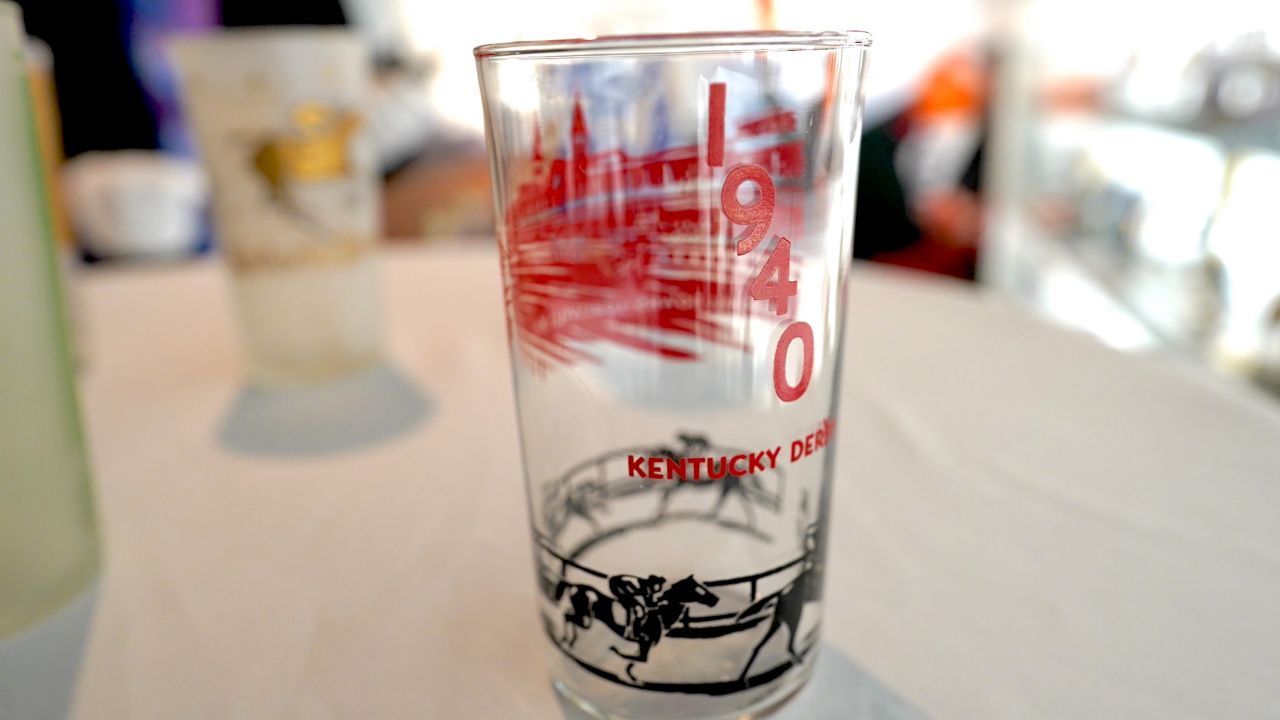LOUISVILLE, Ky. — We are just a few days away from the running of the 147th Kentucky Derby. If it feels like Derby 146 wasn't that long ago, you're not alone. Due to COVID-19, Derby 146 was postponed until Sept. 5, 2020.
What You Need To Know
- The Kentucky Derby is this Saturday
- The first official Derby glass was released in 1939
- The '40 Derby glass is the most rare
- Before 1974 you could only buy glasses at Churchill
While Churchill Downs is making its final preparations before the Oaks on Friday, let's learn a little about the very popular official mint julep glasses.
1939 was the first year Churchill Downs released an official Derby glass, but it's the 1940 offering that's considered the rarest.
“When you first start the glasses they were only sold on track so you have less produced," Chris Goodlett explained. Goodlett is the director of curatorial and educational affairs at the Kentucky Derby Museum. The museum has in its possession a 1940 glass.
“The significance of this glass is it’s seen as the most rare and consequently, when it’s available in auction, it is fetching a very high price," Goodlett said.
How much? That's always difficult but under the right auction settings, the '40 glass could bring 5-figures.

Derby glasses from the 1990s and 2000s were produced in great numbers, which is why they are very inexpensive at your local peddler's mall. You can expect to pay $5-10 for a single glass released in the 1980s.
Goodlett has another special glass in the museum collection released in 1949.
“The man you see there is the profile of Matt Winn, Col. Matt Winn. He is the man this given credit for making the Derby the international event it is today. He was an executive at the track from 1902 until 1949 and that is the 1949 mint julep glass. It says, 'He has seen them all' on the front, which was true at that point. He saw every Derby since the first one in 1875. 1949 he was commemorated on that glass and he would pass away in October of that year.”
We should also not forget about the unique circumstances surrounding Derby 146. The glass for that race was printed with it's original May 2 date.
“Interesting glass because for the second time in the history of the Derby that date of the race changed," Goodlett said.



